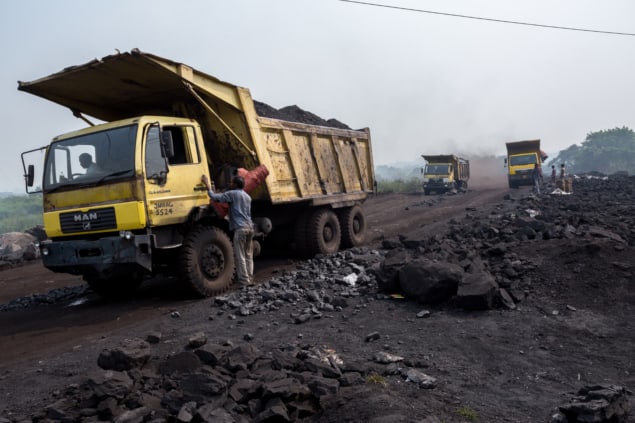
Last Saturday a tearful Alok Sharma brought down a hammer to declare the COP26 agreement adopted – but the frustration in Glasgow was palpable. Moments earlier, national representatives had queued up to express disappointment at India’s infamous last minute interjection to weaken the deal’s wording from “phase out” to “phase down” of coal. The sentiment was clear: why can’t India just get on with ditching the coal?
Of course, climate politics is never as straightforward as it appears. India’s current reliance on coal is inextricably linked with its development process, and a just transition to renewable energy requires stronger international support. This contested future of India’s energy sector was one of the topics being discussed this week at Environmental Research 2021, a free-to-attend online event hosted by IOP Publishing.
“In India we have a history of oscillating between being a climate hero and a climate villain,” said Navroz Dubash from the Centre for Policy Research in New Delhi, during his talk on Tuesday. Indeed, Prime Minister Narendra Modi had been praised at COP26 for pledging India to be carbon neutral by 2070 with 50% of its energy generation coming from renewable sources by 2030. Right now coal, oil and natural gas account for 75% of energy use.
Political targets
Dubash is concerned by the number of assumptions built into the projections for India’s future emissions. The models underpinning these figures often contain purely political targets for coal use and they assume India will follow the exact same development pathway as China. Dubash’s work bridges the gap between climate modellers and the policy community by unpacking these assumptions. “When we think about future emissions scenarios we need to think about future Indias,” he said.
Radhika Khosla, a researcher at the Oxford India Centre for Sustainable Development, said researchers need to better understand the amount of carbon “locked in” to different development trajectories. Historically there has been far more focus on energy supply and little consideration of how changing energy demand will shape future emissions. “It’s not just about infrastructure, it’s also about changing behaviours and institutions,” she said. Khosla and Dubash collaborated on a 2018 paper in Environmental Research Letters, which addressed these uncertainties around India’s future emissions.
India’s changing energy demands will be discussed tomorrow (Friday) by Patil Balachandra from the Indian Institute of Science in Bangalore. Speaking with Physics World beforehand, Balachandra said that renewables rollout is essential but that too much focus is being placed on the physical technology alone. He believes India’s reliance on coal can be greatly reduced through more integrated predictions of future supply and demand.
Solar and wind dominate
“My state of Karnataka is already 70% renewable, dominated by solar and wind and the maximum capacity is 2.5 times the maximum peak demand. But we still have power cuts because of weather variability,” he said. Balachandra would like power authorities to combine meteorological predictions with usage forecasts to be better prepared for when the Sun doesn’t shine or the wind doesn’t blow. He’d also like it to be easier for coal-dominant states to buy renewable energy from renewable-dominant states and vice versa.
India’s energy demand is evolving as the economy emerges. In Bangalore the maximum load on the power grid used to be connected with water-heating demand around 8 a.m. but since 2010 the spike occurs now around midday – linked with the activity peak in the city’s thriving services sector. In New Delhi the biggest summer peak is around midnight due to people putting on the air con as they go to bed. “Historically people used to feel comfortable at 30 degrees centigrade, now they only feel comfortable at 22 degrees,” says Balachandra. Economic incentives for individuals and businesses could help to spread the power load across the day.
Given that India imports its gas and oil, you can see why coal remains important to national security for now. But as India phases down coal over the longer term many are concerned about its socioeconomic impacts. Townships have developed around coal mines and Indian Railways – one of the largest employers in the world – relies on coal transportation for nearly 30% of its revenue. “There may be even more new jobs created in renewables but these jobs will not always be for the same people. The government needs to help to retrain people in these coal townships,” says Balachandra.
- This week 13 national physical societies committed to tackling the climate crisis and to help bring about new green economies. The Indian Physics Association and the Institute of Physics for the UK and Ireland were among the signatories of the official statement.


